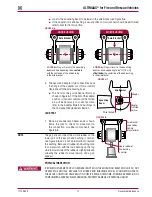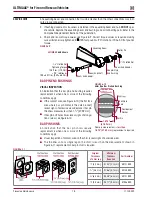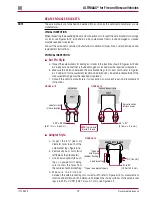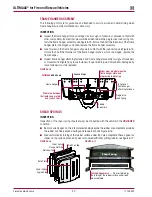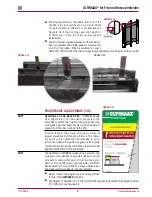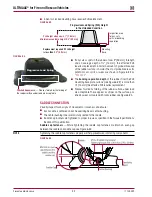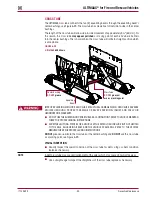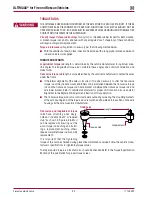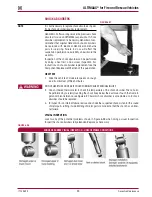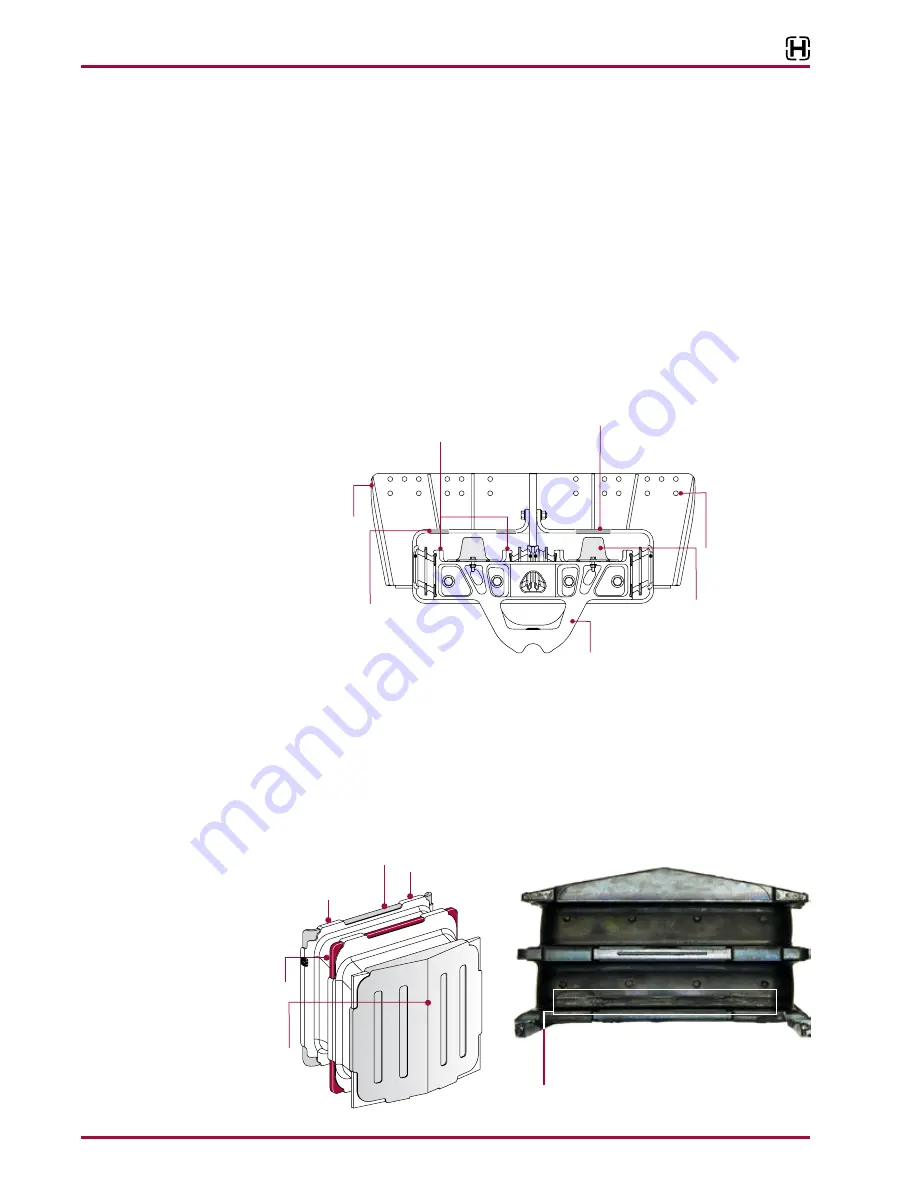
Preventive Maintenance
20
17730-299
ULTIMAAX
®
for Fire and Rescue Vehicles
FRAME HANGER ASSEMBLY
The following points are for guidance and intended to assist personnel in determining when
frame hanger assembly maintenance is necessary .
INSPECTION
■
Inspect the frame hanger for any damage, cracks or signs of adverse or abrasive contact with
other components . Some minor wear will be evident where the progressive load spring con-
tacts the frame hanger assembly, see Figure 6-15 . If more than half the thickness of the frame
hanger plate is damaged or cracked, replace the frame hanger assembly .
■
Look for wear in the frame hanger cavity due to contact with the jounce stop, see Figure 6-15 .
If more than half the thickness of the frame hanger plate is worn or damaged, replace the
frame hanger .
■
Inspect frame hanger attaching fasteners and frame hanger assembly for signs of looseness
or movement . Retighten any loose fasteners to specified torque . Components damaged by
loose fasteners must be replaced .
FIGURE 6-15
SHEAR SPRINGS
INSPECTION
Inspection of the shear spring should always be conducted with the vehicle in the
UNLOADED
condition .
■
Bent or burred edges on the rate plates extending beyond the rubber are acceptable provided
the rubber can freely expand during vehicle operation, see Figure 6-16 .
■
Creases formed by folding of the rubber surface under load are acceptable . These appear as
stripes on the surface, polished by wear or covered with tacky (sticky) rubber, see Figure 6-17 .
FIGURE 6-16
FIGURE 6-17
Frame Hanger
Progressive
Load Spring
Location of
frame hanger
attaching fasteners
Minor wear area between the
frame hanger plate and
progressive load spring
Wear area between
the frame hanger plate
and jounce stops
Jounce Stops
Saddle
Assembly
63K Shown
ULTIMAAX
Rate Plate
Shear Spring
Angled Side
Shear Spring
Flange Flat Side
Notch on Top
Notch on Top
Shear Spring
Polished Appearance
—
Creases formed by
the folding of the rubber surface under load
are acceptable.












